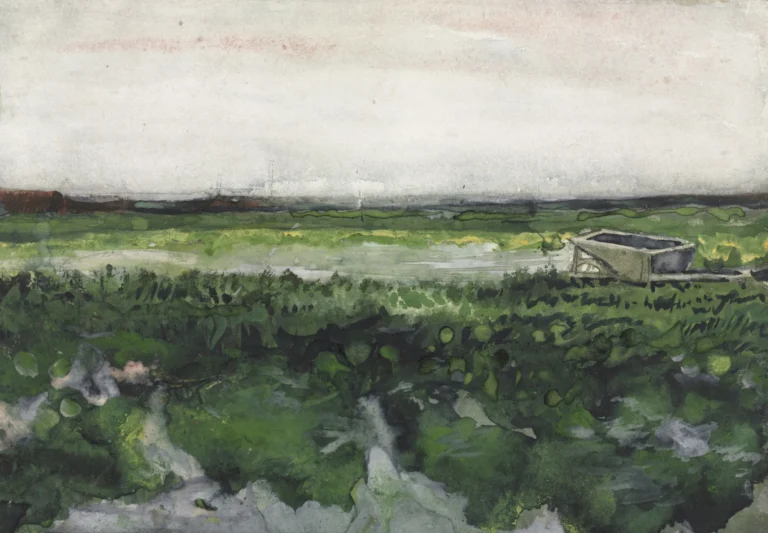Landscape With Wheelbarrow (1883)
Created in September 1883, Landscape with Wheelbarrow showcases Van Gogh's deep appreciation for the beauty of rural life. Painted during his stay in Drenthe, this watercolor piece combines his learned techniques with personal sensibilities, portraying a serene landscape using delicate hues and spontaneous brushwork. The work embodies Van Gogh's exploration of everyday scenes, illustrating his desire to reflect the tranquility of nature in his art.
Year 1883
About the Artwork
The story of Landscape with Wheelbarrow begins in September 1883, when Vincent van Gogh left the urban environment of The Hague in search of more idyllic rural scenes. His arrival at Drenthe marked a significant period of change in his artistic journey, as he became deeply inspired by the simplicity and beauty of the countryside. This painting features a wheelbarrow, a symbol of manual labor that evokes the hard work and communal life of rural dwelling. Van Gogh's use of watercolor and gouache allowed for a fluid representation of the natural landscape, emphasizing his exploration of color and form. This piece, along with others from this period, reflects his fascination with portraying the everyday life of farmers and landscapes, ultimately enriching his artistic legacy.
Did You Know
In 1883, Van Gogh was undergoing significant changes in both his life and art, moving from urban environments to embrace rural themes that would define his work for years to come.
This work highlights Van Gogh’s exploration of watercolor and gouache, showcasing his fondness for experimentation with different mediums, which set him apart from his contemporaries.
The wheelbarrow featured in the painting symbolizes the toil of rural life, serving as a reminder of the beauty and hardship inherent in everyday tasks, a theme that resonates in much of Van Gogh’s work.
Liked what you see? Add it to your collection.
Enjoyed reading? Share it.
... continued
Creation and Location
In September 1883, Van Gogh left The Hague to find more rural landscapes to paint and moved to Drenthe, a village in the Netherlands. It was during this period that he created Landscape with Wheelbarrow.
Medium and Size
The painting is executed in watercolor and gouache over traces of graphite on cream wove paper. It measures 24.9 x 35.7 cm.
Current Location
The artwork is part of the collection at the Cleveland Museum of Art.
Style and Context
This painting reflects Van Gogh's interest in capturing rural scenes and everyday life, which was a common theme in his work during this period. The use of watercolor and gouache highlights his experimentation with different mediums and techniques.










